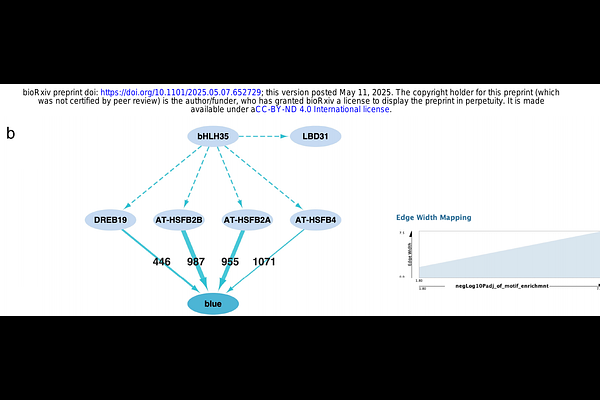bHLH35 mediates specificity in plant responses to multiple stress conditions

bHLH35 mediates specificity in plant responses to multiple stress conditions
Sinha, R.; Zandalinas, S. I.; Pelaez-Vico, M. A.; Ghani, A.; Khan, M. A.; Induri, S. P.; Bereimipour, A.; Ghandour, T.; Ogden, A.; Huang, S.-S. C.; Azad, R.; Mendoza, D. G.; Joshi, T.; Fritschi, F. B.; Mittler, R.
AbstractHow biological systems respond to stress is a fundamental question in biology, primarily addressed using the reductionist approach of applying one stress condition at a time. In nature, however, organisms experience a multitude of stresses, simultaneously or sequentially, questioning the validity of the reductionist approach for predicting plant responses to stress under natural conditions. Here, we reveal that in the flowering plant Arabidopsis thaliana, the transcriptional regulator bHLH35 is required for plant survival under a specific set of stress conditions that includes a combination of salinity, excess light, and heat, occurring simultaneously (but not for each of these stresses applied individually or in any other combination). Under these conditions, bHLH35 interacts with NAC069 and binds the promoter of LBD31, also specifically required for survival under the 3-stress combination. Our findings uncover a high degree of specificity in the response of organisms to stress, a specificity that would not have been revealed using the reductionist approach, and one that should be taken into consideration when developing agronomically important crops with heightened resilience to climate change.